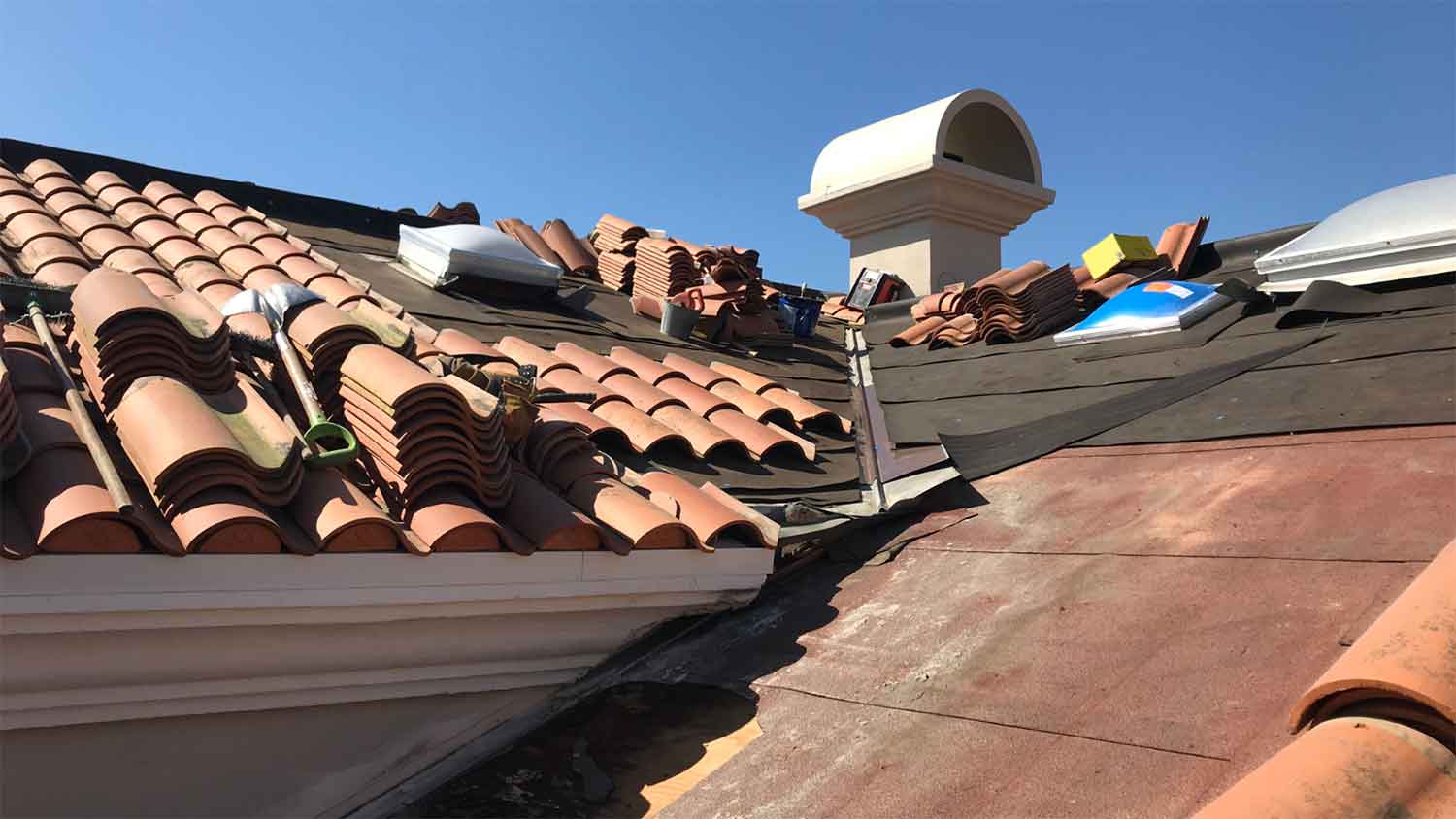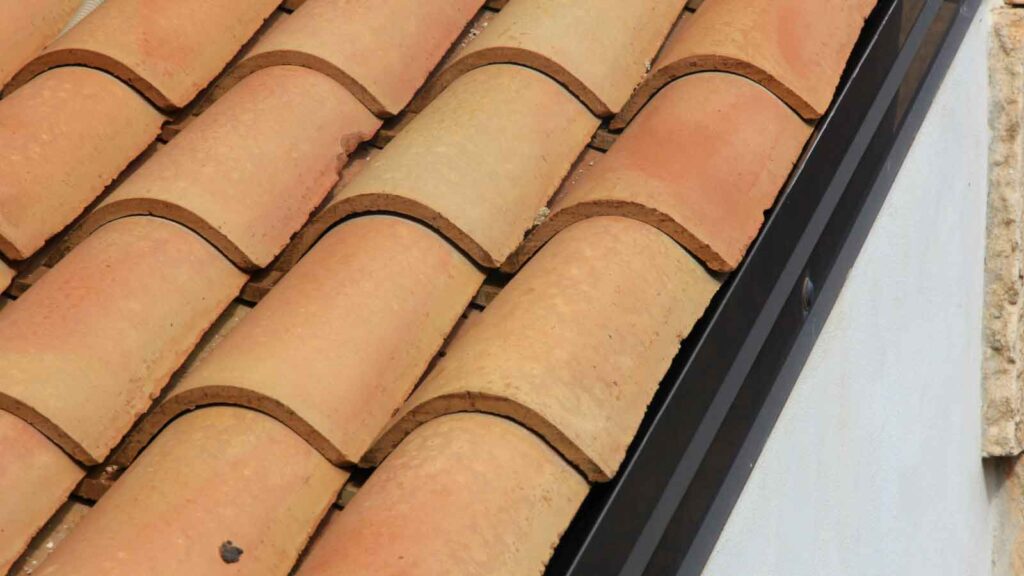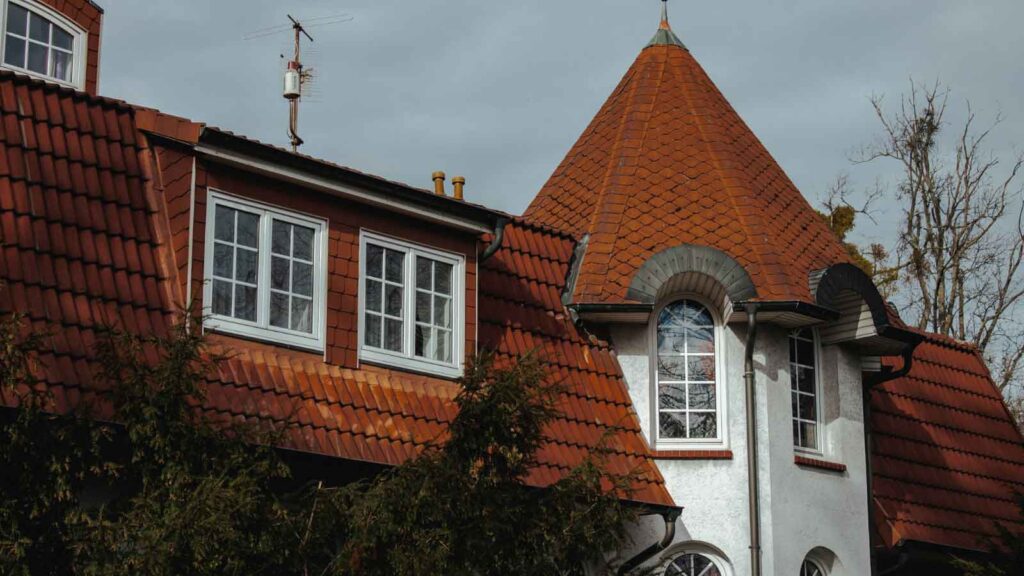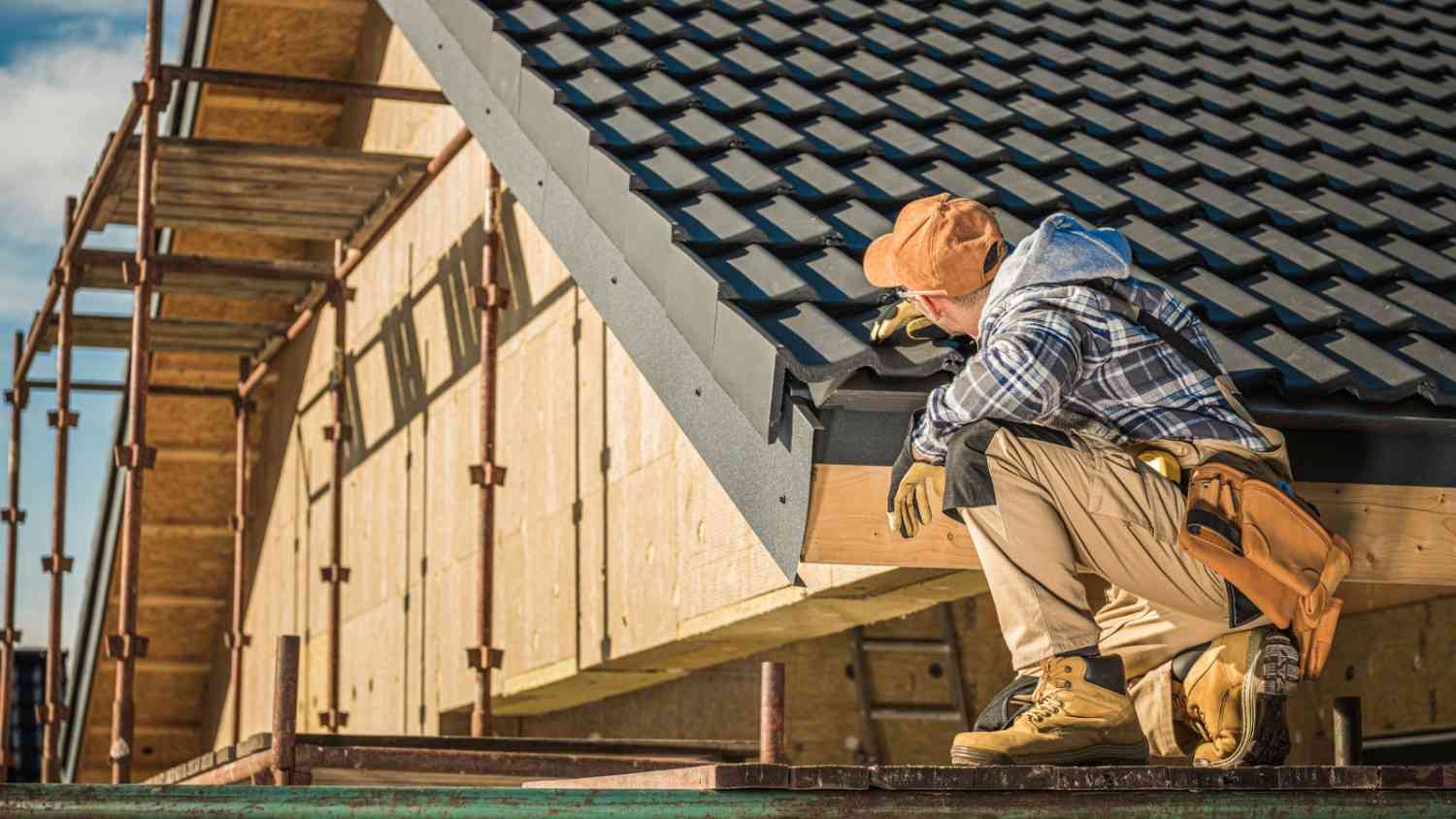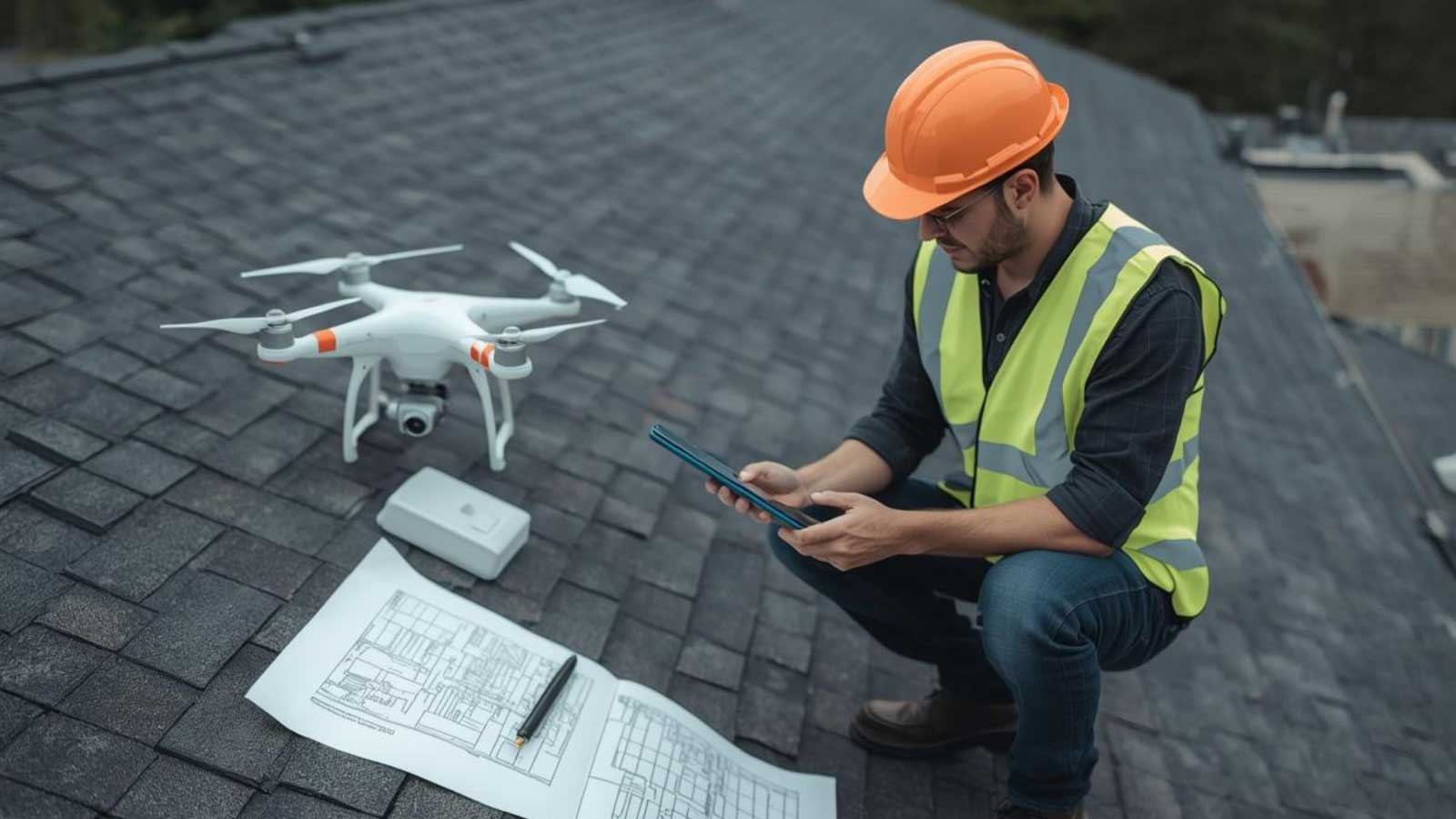Picking the right roof can feel like a big decision. Between durability, cost, and whether it can handle your local climate, there’s a lot to think about. Clay tile roofs often stand out for their long lifespan and timeless appearance, but some homeowners hesitate due to the price tag and required upkeep.
That’s usually when the questions start: Is clay tile the right choice for my home? Is it really worth the investment? And how does it compare to other options offered by residential roofing services?
To help you thrive in this dilemma, we’ll cover the essentials of clay tile roofs, from how they work, their pros and cons, and whether they’re a wise investment for you in this blog. By the end, you’ll feel more confident about choosing the roof that fits your home best.
What Clay Tile Roofs Really Are and How They Work
Clay tile roofs are made from natural clay shaped into tiles and fired at high temperatures until hardened. This process creates a dense, weather-resistant material that can last for decades. The tiles are available in flat, curved, or interlocking styles, which allows them to suit different architectural designs and drainage needs.
The system works through overlapping placement. Each tile is installed so it overlaps the one beneath it, creating a layered surface that sheds water effectively. The curved shapes often seen in traditional designs also allow air circulation under the tiles. That airflow helps regulate roof temperature, protects the structure from heat buildup, and reduces stress on the home during hot seasons.
Because clay tiles are heavier than other roofing materials, they require a strong roof structure for support. When installed correctly, they provide excellent fire resistance, withstand heavy rains, and resist damage from pests or decay.
This combination of durability, efficiency, and style is why clay tile roofs have remained popular for centuries.
Pros and Cons of Having a Clay Tile Roof
Clay tile roofs are known for their beauty, strength, and impressive lifespan, but they are not without challenges. They can offer unmatched value for some homeowners while being less practical for others. To make an informed choice, let’s look closely at the advantages and drawbacks of clay tile roofing.
Major Advantages of Clay Tile Roofing Systems
Clay tile roofing stands out for its durability and long service life. With proper care, it can last decades longer than many other roofing materials. Beyond its longevity, it also offers unique benefits that make it a smart choice for specific properties.
To give you a deeper understanding, key advantages of clay tile roofing systems include:
- Exceptional resistance to fire, insects, and decay.
- Natural insulation properties that improve energy efficiency.
- Wide variety of colors and shapes to fit architectural styles.
- Minimal maintenance requirements compared to other roofing systems.
These qualities make clay tile a premium option for homeowners seeking both functionality and style. By choosing the best roofing company, you also ensure proper installation, which is critical for maximizing these benefits.
A professional installation not only enhances performance but also protects the roof structure from future issues. With the right team, clay tile roofing becomes a reliable and attractive investment.
Potential Drawbacks and Limitations to Consider
While clay tile roofing has many strengths, it also comes with limitations that should not be overlooked. These challenges often determine whether clay tiles are a practical choice for your home.
Key drawbacks of having a clay tile roofing system include:
- High upfront cost compared to asphalt or metal roofing.
- Significant weight requires reinforced roof framing.
- Fragility when walked on, making repairs more delicate.
- Limited suitability in regions with freeze-thaw cycles.
The expense of installation and structural preparation can put clay tile out of reach for some homeowners. Even after installation, the tiles require care when performing maintenance or repairs, as stepping on them can cause damage and potentially lead to cracks. Climate also plays a role, since colder regions may shorten the lifespan of clay tile roofs.
Despite these drawbacks, though, clay tile roofing remains one of the most enduring options available. For homeowners who can manage the upfront investment and structural requirements, it delivers decades of reliable service.
With the proper maintenance and professional oversight, its benefits often outweigh the challenges.
How to Care for a Clay Tile Roof Properly
Clay tile roofs are durable, but they require regular maintenance to ensure optimal performance. Regular care ensures they continue to perform well and look their best. To understand how to maintain them effectively, let’s look at the key areas homeowners should focus on.
Regular Inspection and Cleaning Requirements
A clay tile roof should be inspected at least once a year, ideally after harsh seasons like winter or heavy storms. Inspections help catch small cracks, chips, or loose tiles before they develop into bigger issues, such as leaks. Early detection allows homeowners to manage repairs without significant disruptions.
Cleaning is another crucial step. Over time, moss, algae, or dirt can build up on the tiles, especially in shaded or humid areas. This buildup holds moisture against the surface and can gradually wear down the material. A gentle cleaning approach, such as soft washing, keeps the roof clear without damaging the tiles.
By keeping inspections and cleanings consistent, homeowners extend the lifespan of their clay tile roof. It also preserves the roof’s natural appearance and ensures the system continues to function as intended.
Identifying and Replacing Damaged or Broken Tiles
Even with careful maintenance, some tiles will eventually crack or break. This can happen due to falling branches, high winds, or accidental foot traffic during servicing. Leaving damaged tiles in place creates pathways for water to enter and weaken the roof structure.
Replacing tiles requires precision. The process involves lifting surrounding tiles without breaking them, removing the damaged piece, and carefully installing a new one. Homeowners should keep spare tiles from the original installation on hand for a perfect match.
While it may seem like a small task, proper replacement contributes to the overall health of the roof. The financial benefits of roof maintenance include avoiding costly structural repairs and extending the service life of the system.
Maintaining Gutters and Drainage Systems
A clay tile roof is only as effective as its drainage system. Gutters and downspouts must remain clear to allow rainwater to flow off the roof without pooling or backing up. When water becomes trapped, it can seep under the tiles and damage the roof deck.
Cleaning gutters regularly prevents blockages from leaves, dirt, and other debris. This is especially important during the fall and after storms. Homeowners should also confirm that the gutters are sized appropriately for the roof, since clay tile surfaces can shed heavy volumes of water quickly.
Good drainage maintenance not only protects the roof but also safeguards walls, siding, and foundations. It is a simple but critical part of keeping the entire property secure from water damage.
Professional Maintenance Services and When to Call Experts
While some tasks, like gutter cleaning, may be done by homeowners, most clay tile roof maintenance is best left to professionals. Walking on clay tiles without training can cause breakage, and repairs require skill to avoid creating further damage.
Professional roofers have the right tools and techniques to inspect, clean, and repair clay tiles safely. They can also identify hidden problems like underlayment wear or flashing issues that are not obvious during a casual inspection. Scheduling annual professional maintenance helps address these deeper concerns.
Calling experts is especially important when leaks appear, multiple tiles are damaged, or large sections of the roof show signs of wear. Investing in professional care ensures the roof continues performing for decades, making it a valuable long-term choice for homeowners.
Is Clay Tile Roofing Worth the Investment?
Clay tile roofing carries one of the highest upfront costs compared to other materials, but the long lifespan offsets much of that expense.
While asphalt shingles may need replacing every 20 years, clay tiles often last 50 years or more with proper care. This durability means fewer replacements and lower costs over the long term.
Beyond longevity, clay tile roofs add value to a property. Their classic look boosts curb appeal, and their energy-efficient design helps regulate indoor temperatures, which can lower cooling expenses in warm climates.
These financial and functional benefits make them attractive to homeowners who view their roof as a long-term investment.
That said, clay tile roofing is not the right fit for every home. Roof structures must be reinforced to handle the extra weight, and the initial price of roof installation is higher than many alternatives.
TLDR: For homeowners planning to stay in their property long-term, the investment is often worthwhile.
Final Thoughts on Clay Tile Roofing for Your Home
Clay tile roofs provide durability, efficiency, and aesthetic value that few other roofing materials match. They require a higher investment, but the performance and longevity often justify the cost for the right property.
Working with a trusted roofing contractor ensures proper installation and ongoing care. With expert support, homeowners can maximize the benefits of clay tile roofing and enjoy decades of reliable protection.

